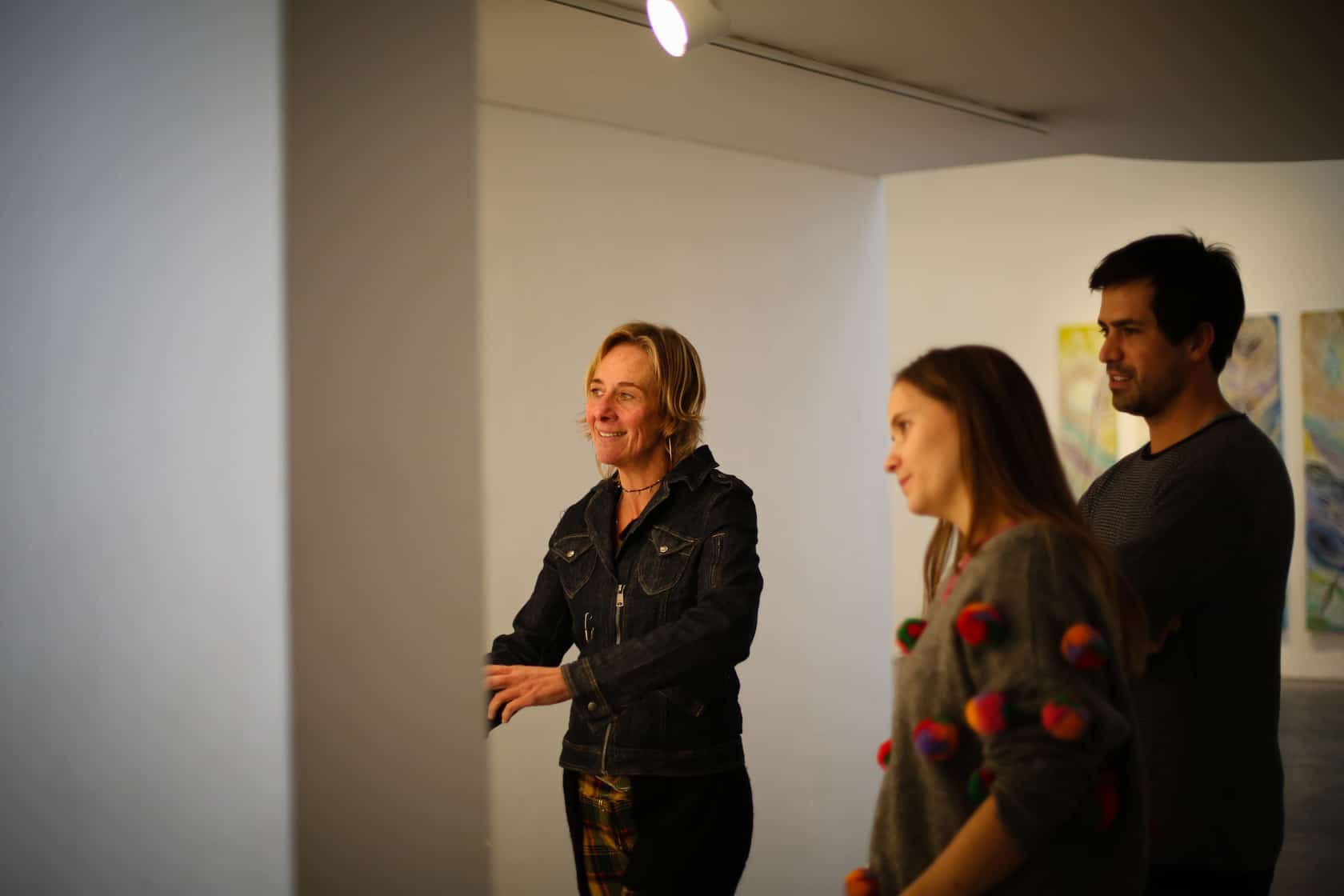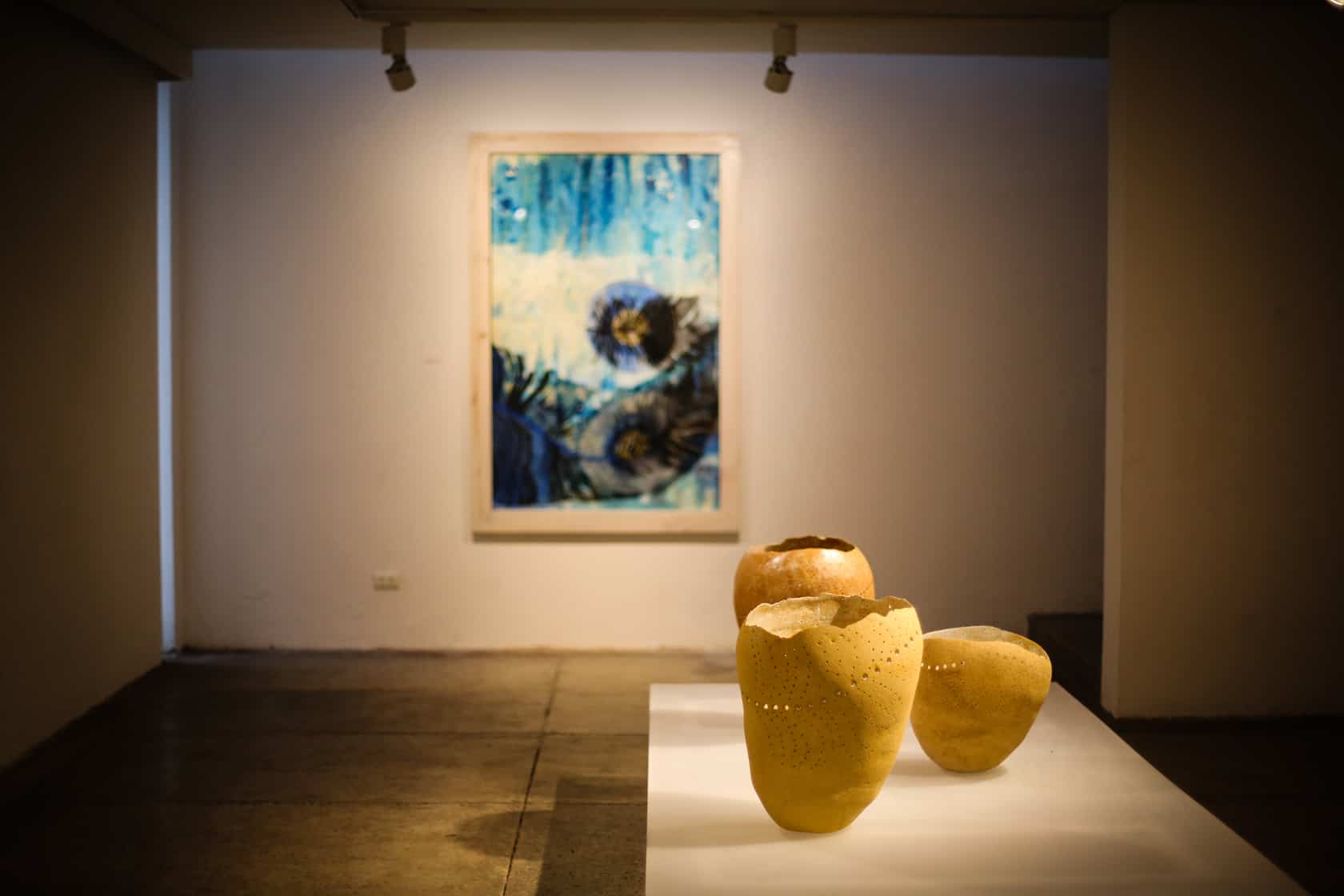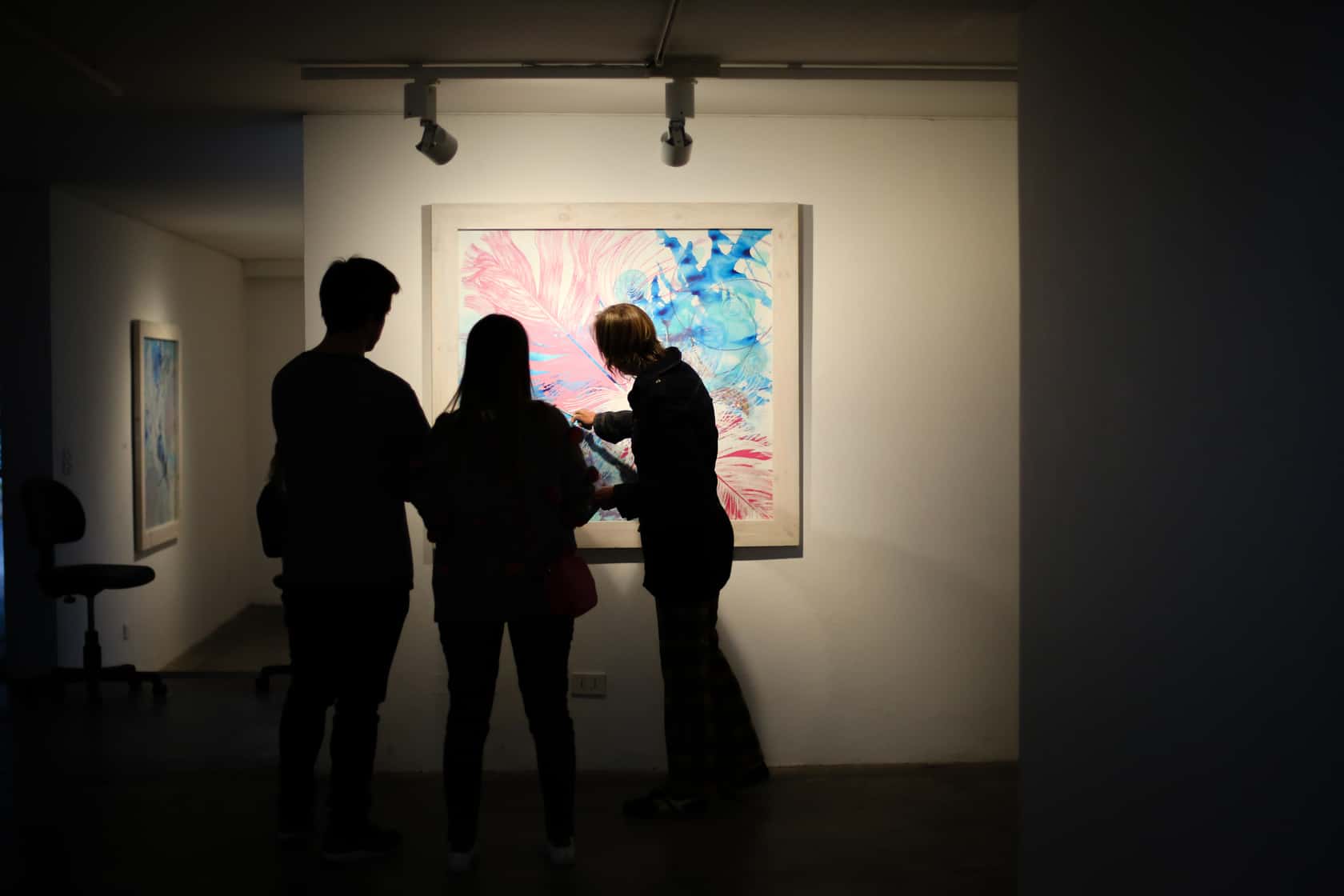Chile’s contemporary art scene may be difficult to crack, but during Galería Weekend Santiago, the city’s public connected with its art in a new, fresh way.
Contemporary art, live music, street food. Local DJs, dance performances, sunrise and sunset. At the beginning of May, Chile’s capital hosted its first “Galería Weekend:” three days of of art, conversations and cultural events. “Galería Weekend Santiago” ran from May 5th to 7th, and was started with the aim of connecting Santiago’s locals (known as “Santiaguinos”) with the country’s burgeoning art scene.
The festival hosted a number of events throughout the city, and ensured that the majority of them free of charge to the public. More than 60 artists, local and foreign, exhibited work during Galería Weekend.
Throughout the weekend, Santiago showcased a variety of artists and a variety of neighborhoods. Since the event took place from a Friday to a Sunday, Galería Weekend mixed art with local culture and activities—exactly its goal. Attendees spilled out from galleries and onto the streets, and mingled with party-goers and families having dinner. This interaction sparked an interest in the public, and many wandered into galleries by chance.
“People who are coming to the event are surprised to know that there’s so many galleries here,” said one gallery’s assistant of GWS. She added that the outreach had brought people of many different ages. “Other people who come are families with children, [who come] to involve their children in art.”
Santiago Art Vibe
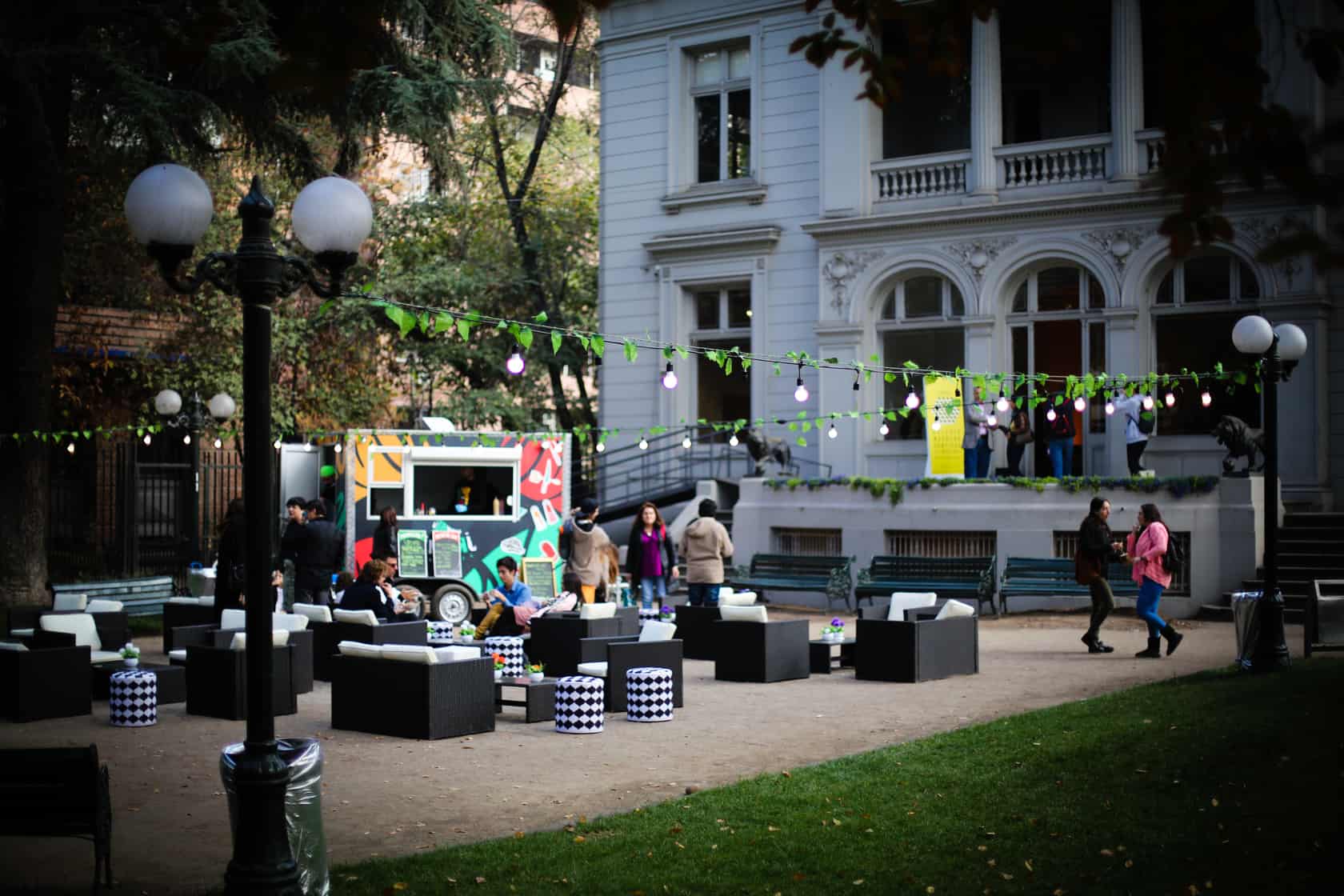
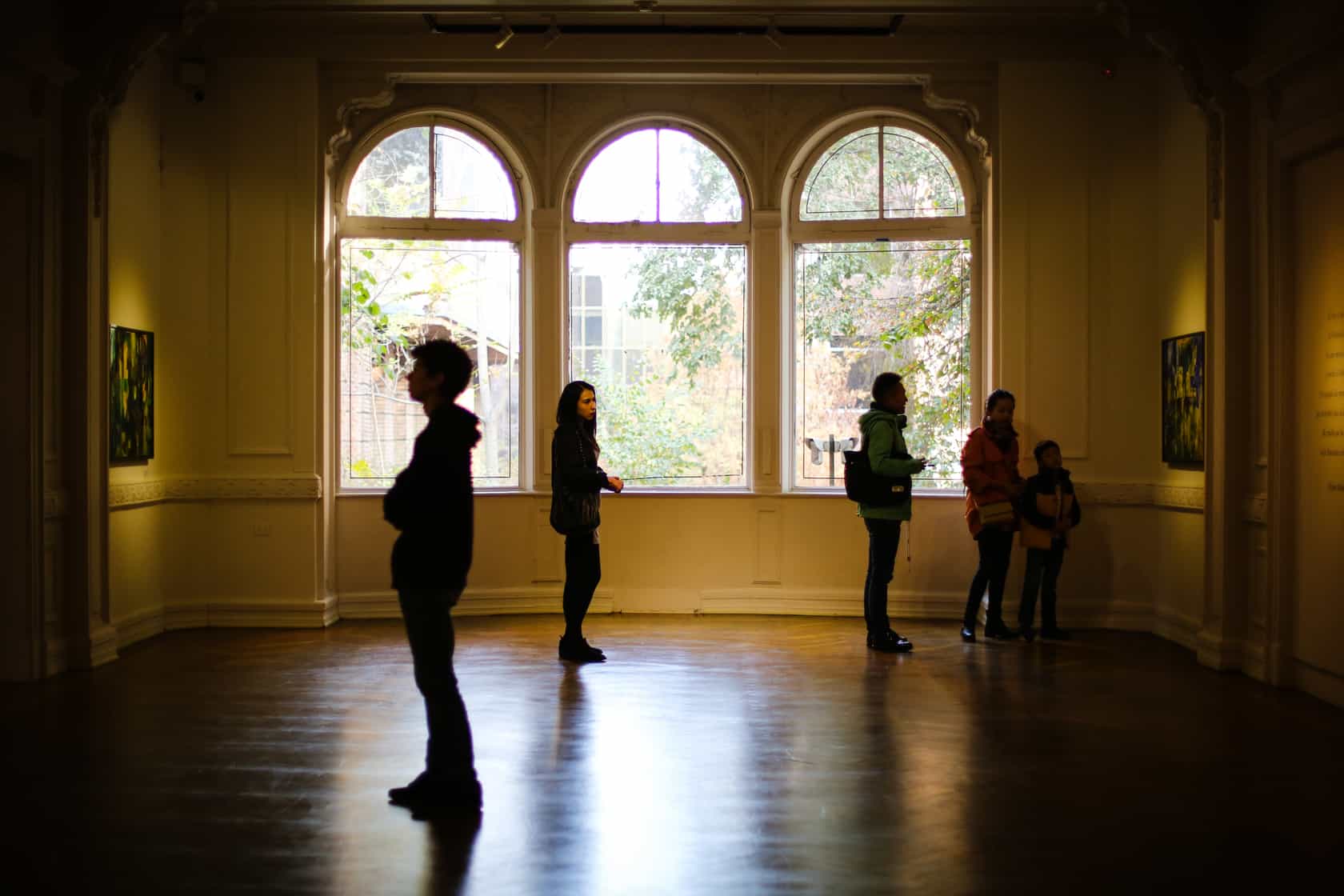
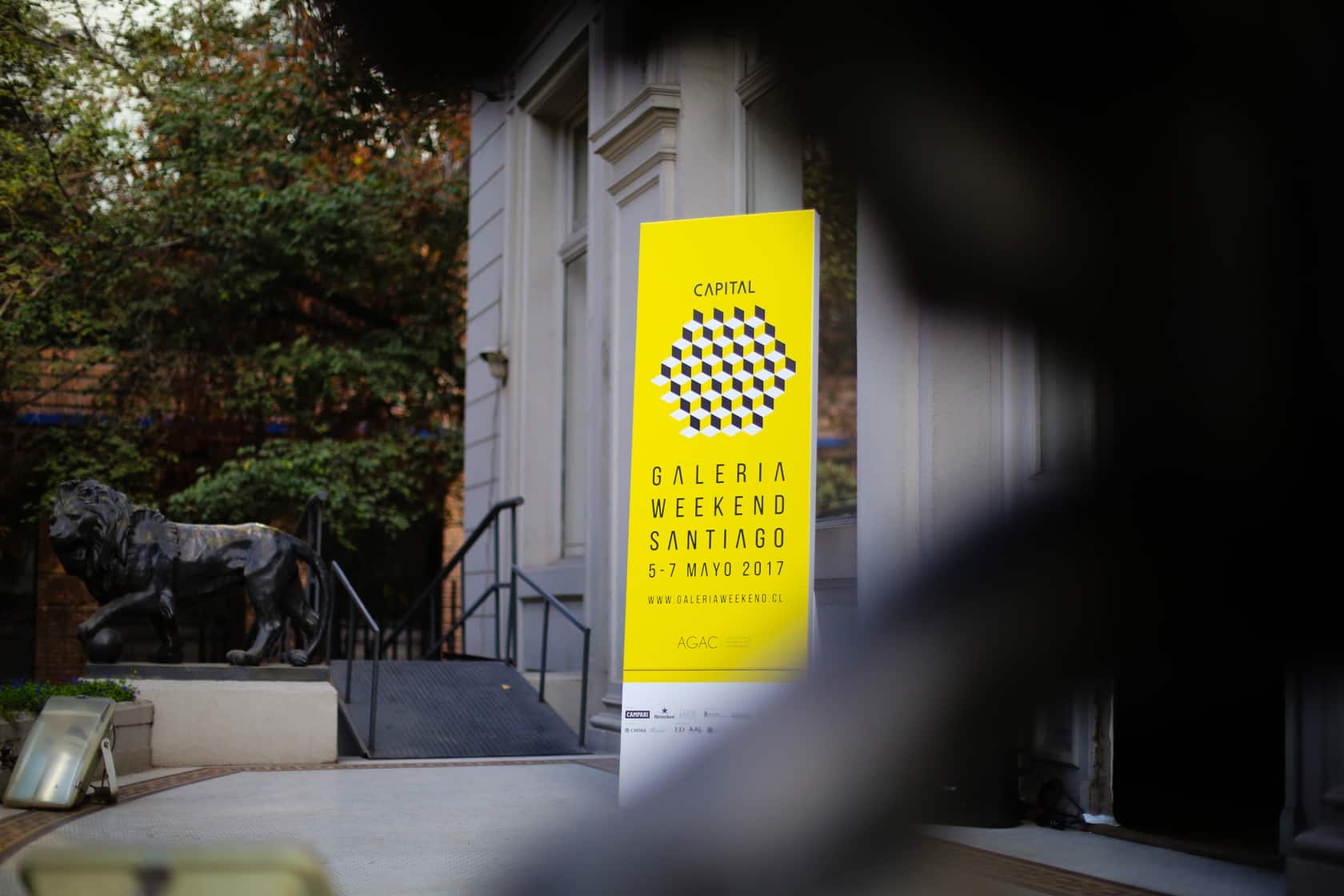
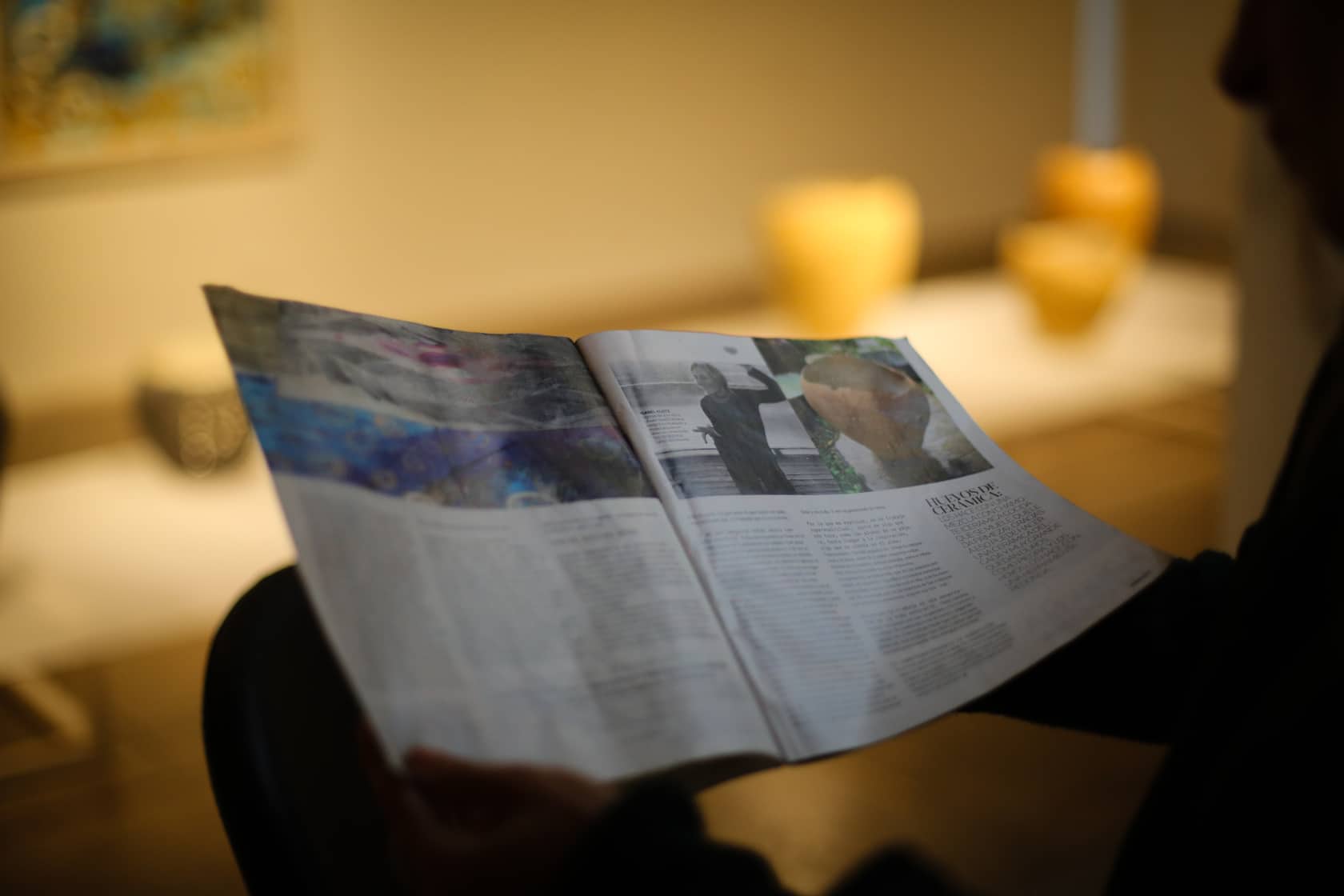
During Galería Weekend’s second day of operation—Saturday—the organization hosted a full day of art panels, exhibitions, and last but not least, free drinks. It was called, simply, “Open Gallery,” or “Galería Abierta.”
From noon until night, the air at Galería Abierta swam with the beats of a local DJ, and outside, a food truck sold empanadas. “This definitely seems to be geared towards young people,” said one attendee of Galería Weekend’s open house. “It should be at night, considering the DJ and free drinks,” she laughed.
The aforementioned “home base” was in Santiago’s trendy neighborhood of Providencia; the atmosphere was cozy, inviting. In fact, before I knew that this was, in fact, my destination (I’m awful with directions, and rocked up following Google maps) I saw the cozy lights, heard the DJ’s music, and thought, “that looks like a lovely way to spend a Saturday, whatever they’re doing!”
As the public walked by, they—like me—seemed interested in “whatever was happening.” The welcoming atmosphere helped to attract the public, and passerby after passerby wandered into the open gallery. Connect the public with Chile’s contemporary art scene: bingo!
Connecting Public/Art/Artists

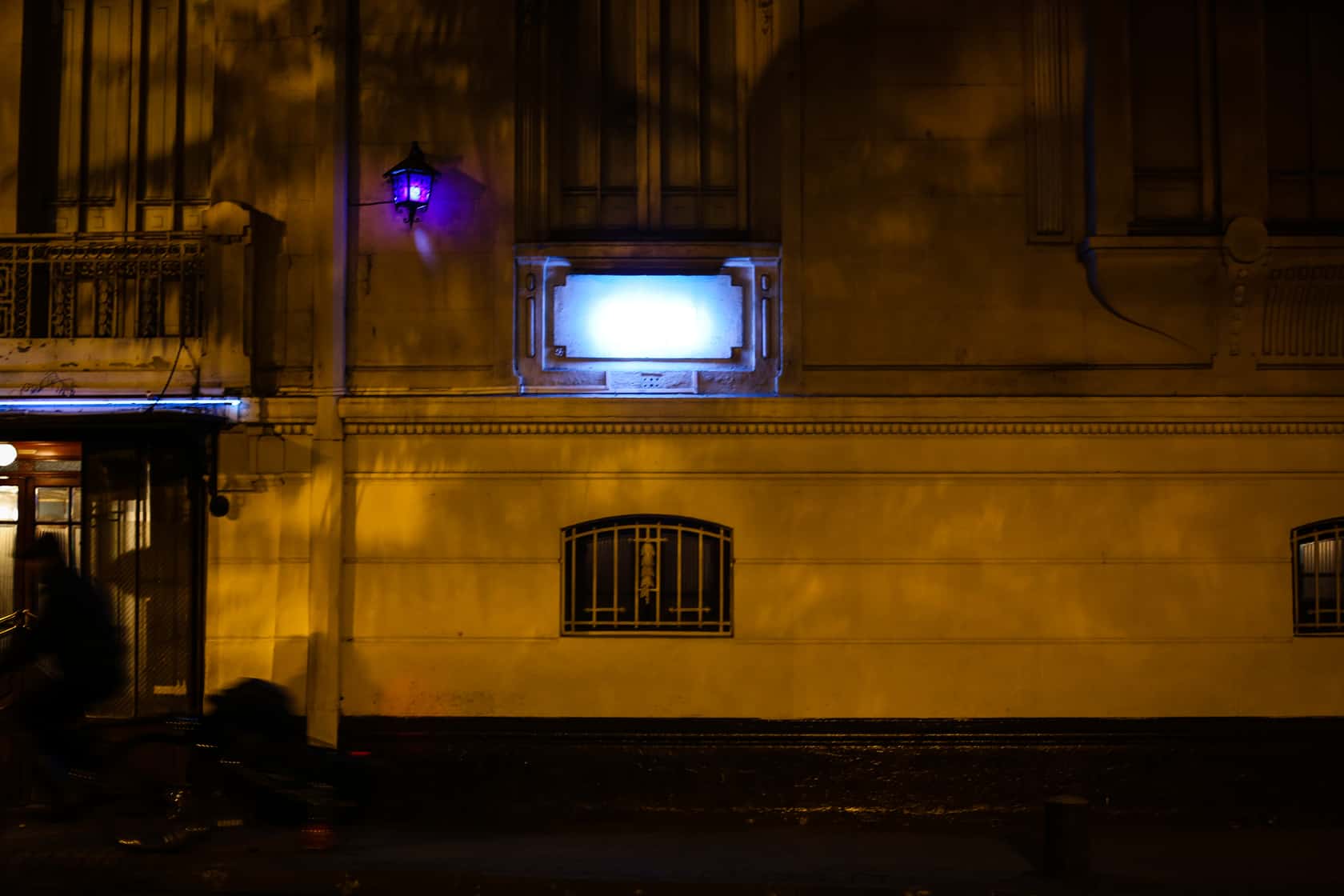
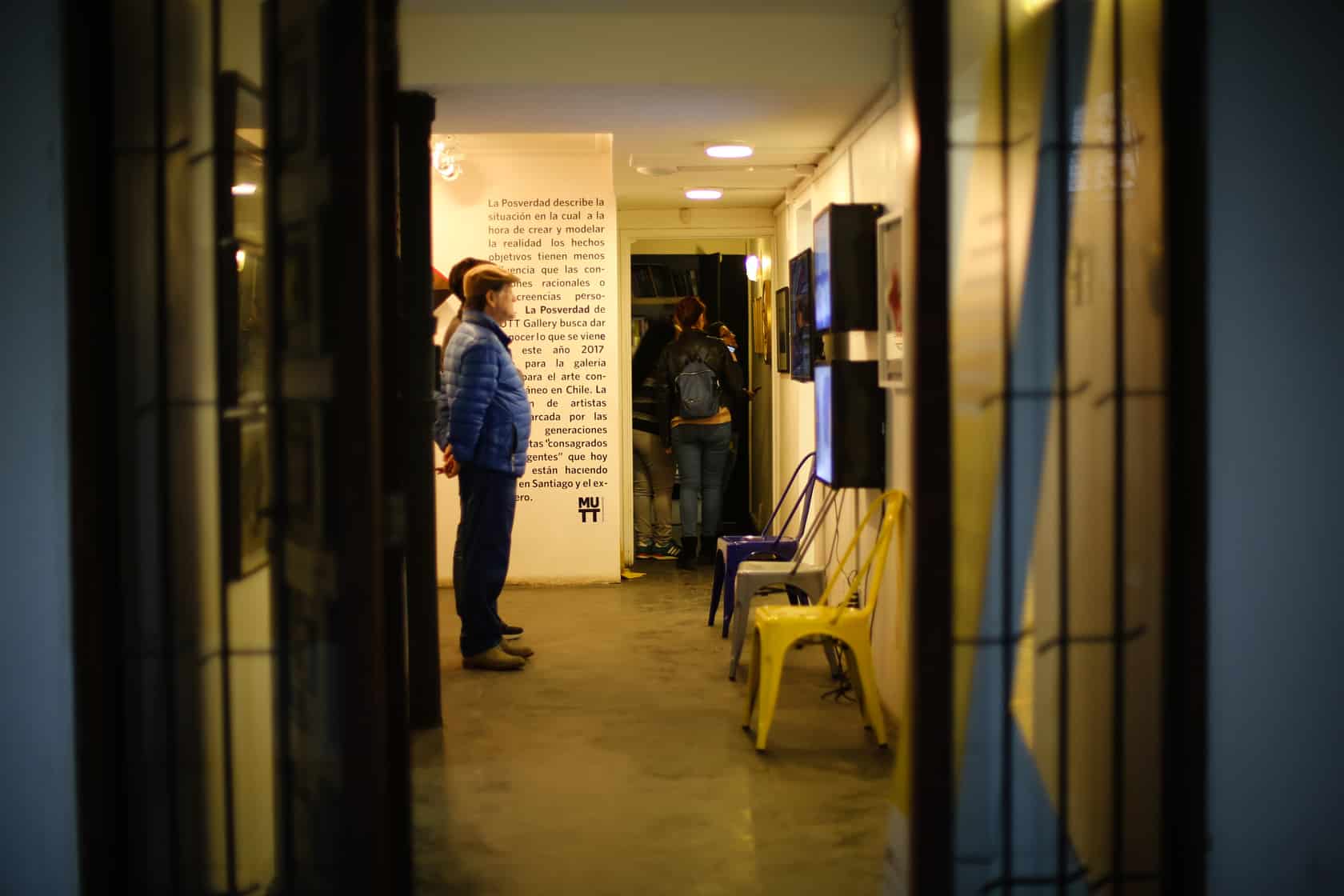
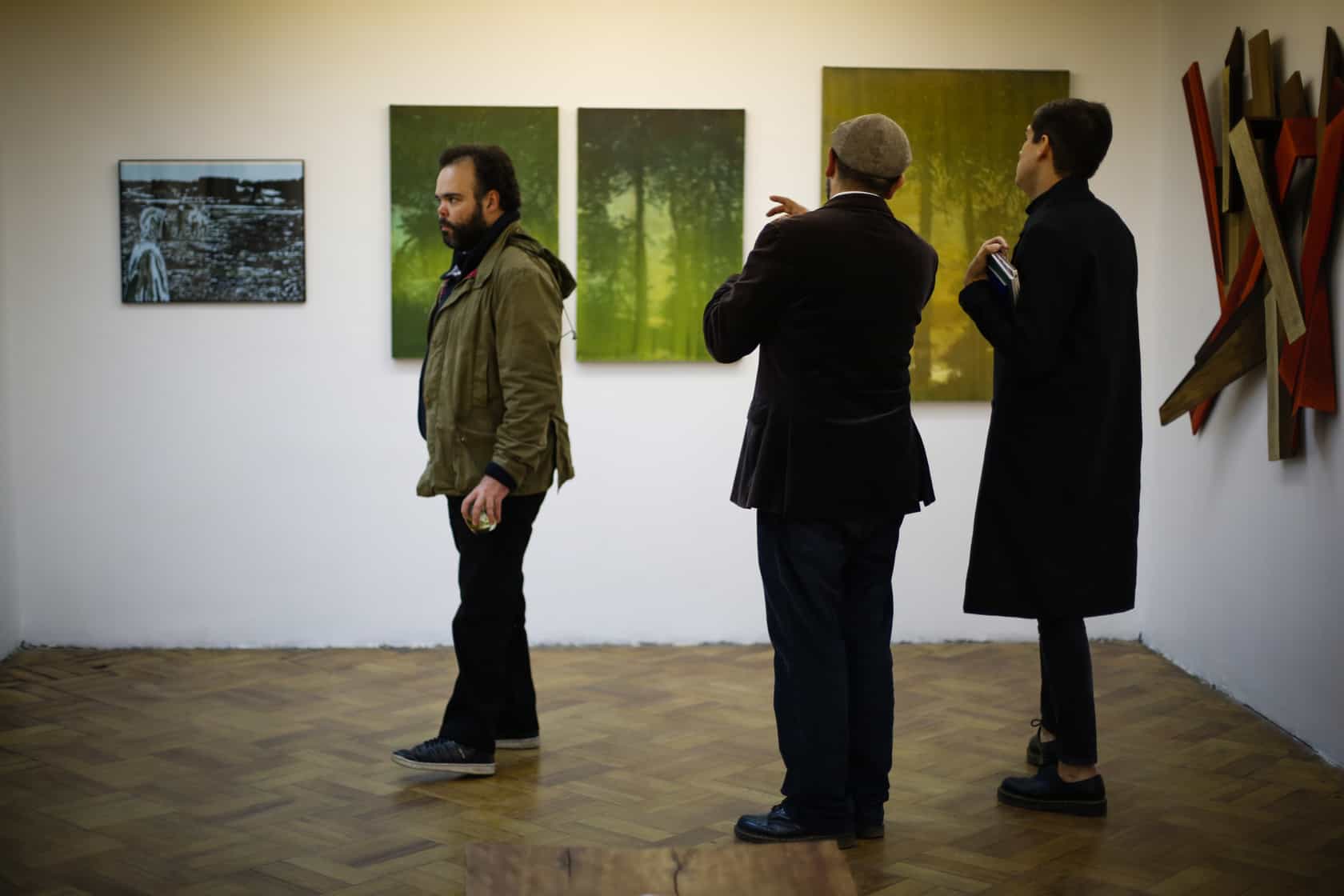
According to one representative, the flow of people during Galería Weekend was “slow, but steady;” a phrase which also describes the growth between art culture and the public in Chile.
This isn’t to say that the country’s art scene is growing slowly; Chile is home to a number of well-known contemporary artists, and the scene is well-developed. “Slow, but steady,” refers, rather, to the growth of the relationship between the public (as individuals, and as public spaces) and the contemporary art community.
It is for this reason that Galería Weekend decided to create and host this festival; they’ve seen the gap, and want to generate public interest.
“These actions contribute to the development of our culture, and bring the work of artists closer to a wider audience,” said Víctor Leyton, one of GWS’ organizers. “It additionally creates spaces where dialogue is favored between different actors [the artists and the public] who are not necessarily connected otherwise.”
Generating a Dialouge
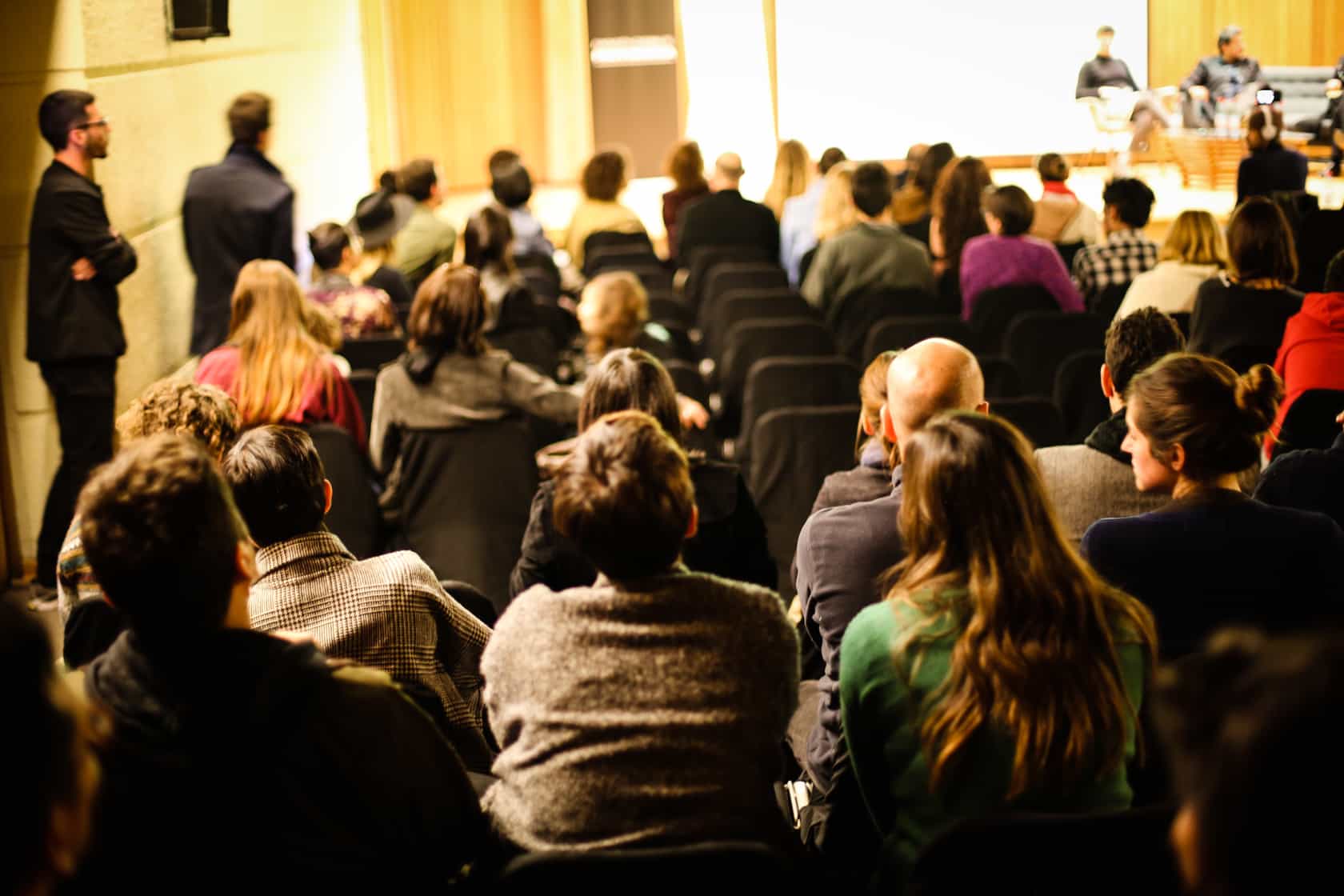
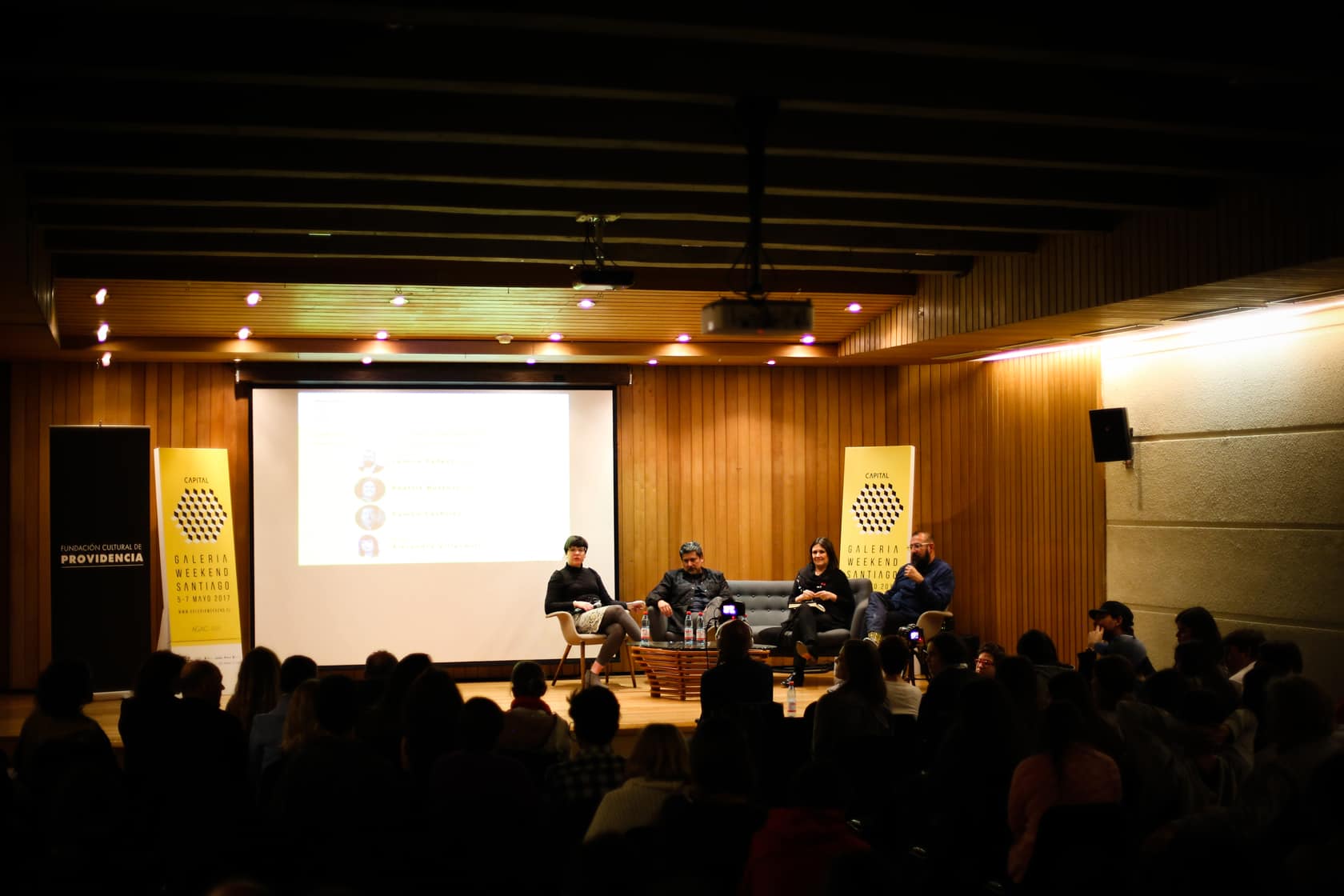
Galleries are crucial spaces for creating a dialogue, and create a dialogue they did. Throughout the weekend, private guided tours were held in a number of galleries. (The tours were free; participants only needed to sign up in advance.)
In addition to the tours, Galería Weekend hosted a series of panels throughout the day on Saturday, focusing on the role of contemporary Chilean art with respect to itself, its country, and its roles abroad.
The panel was hosted by a variety of individuals (everyone from contemporary artists to magazine editors to curators.) Seven different conversations took place throughout the day, and the mini-auditorium where they took place was packed.
Topics of the panels included: “A critical look at contemporary Chilean art,” “Imagining the galleries of the future: a debate about the role that galleries should play to adapt themselves to current times,” and “The chain of art: relations between artists and gallerists.”
Divided Classes
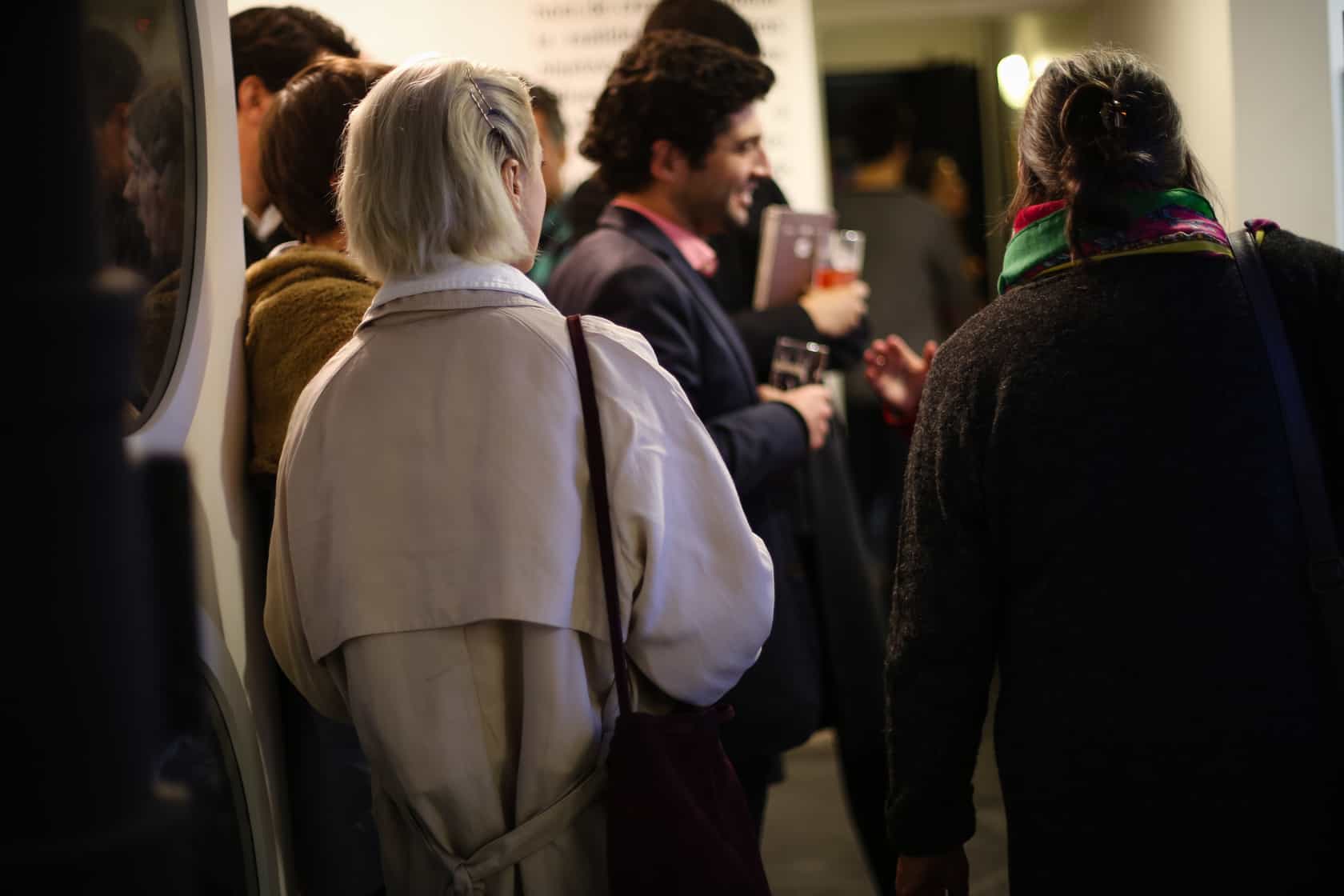
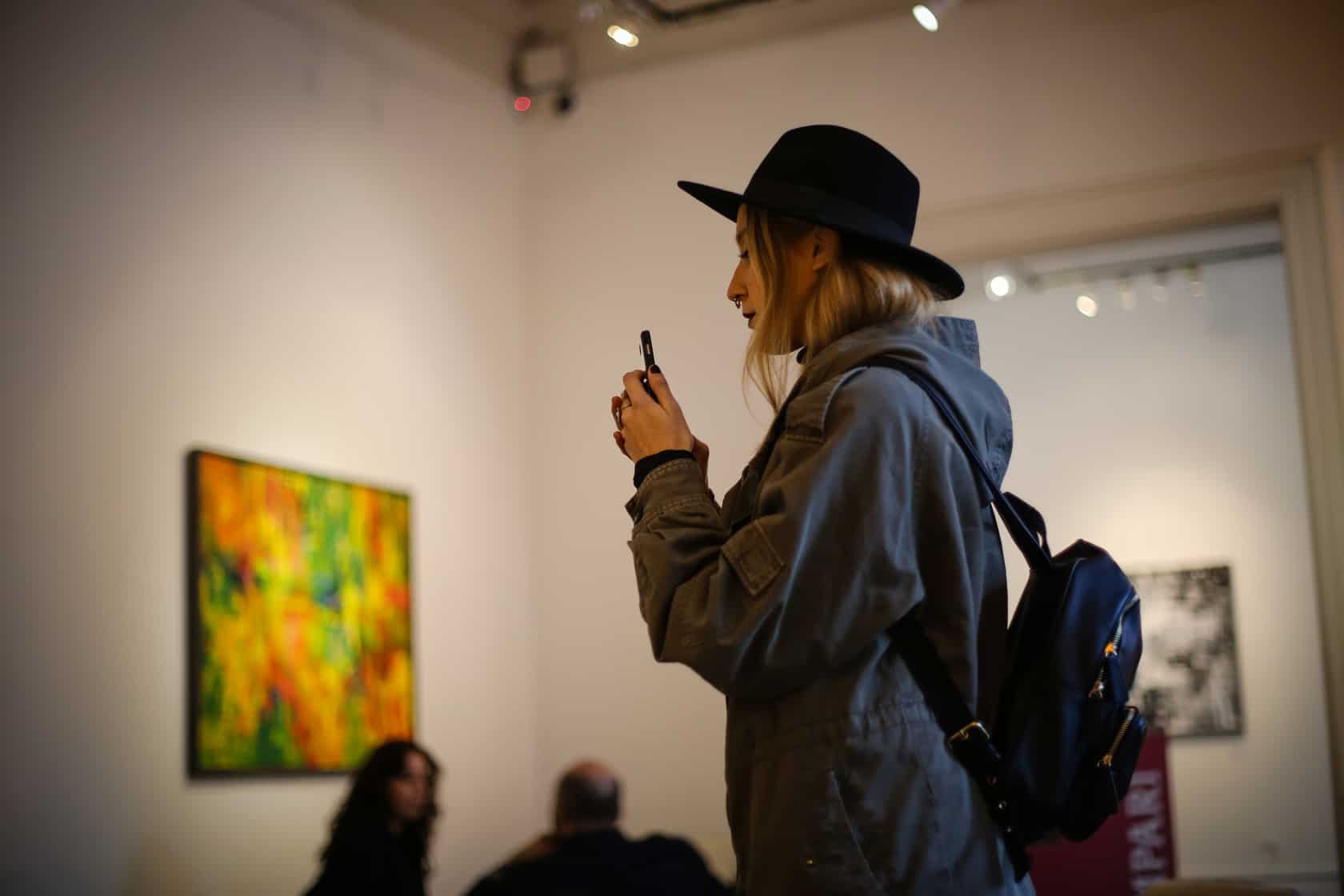
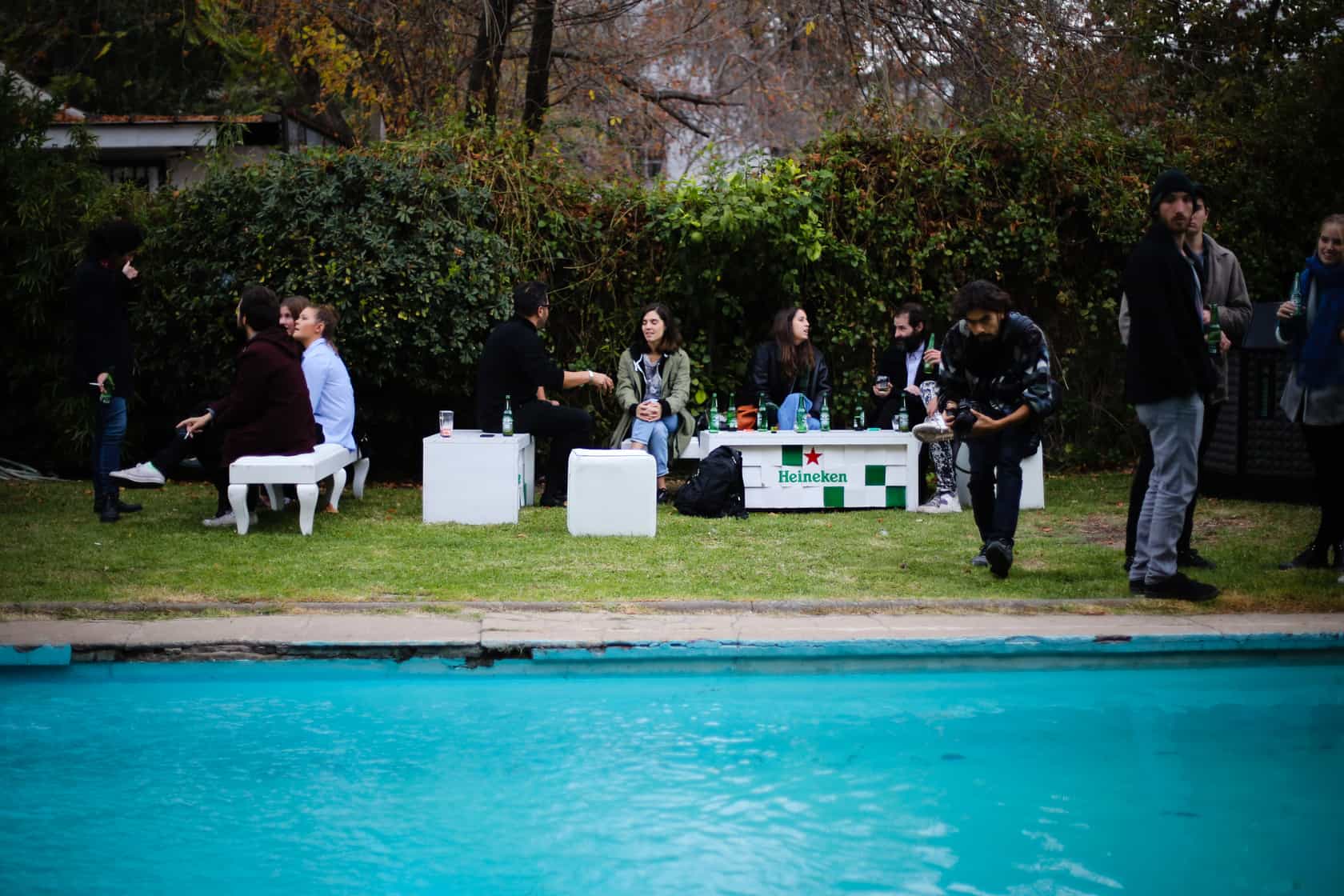
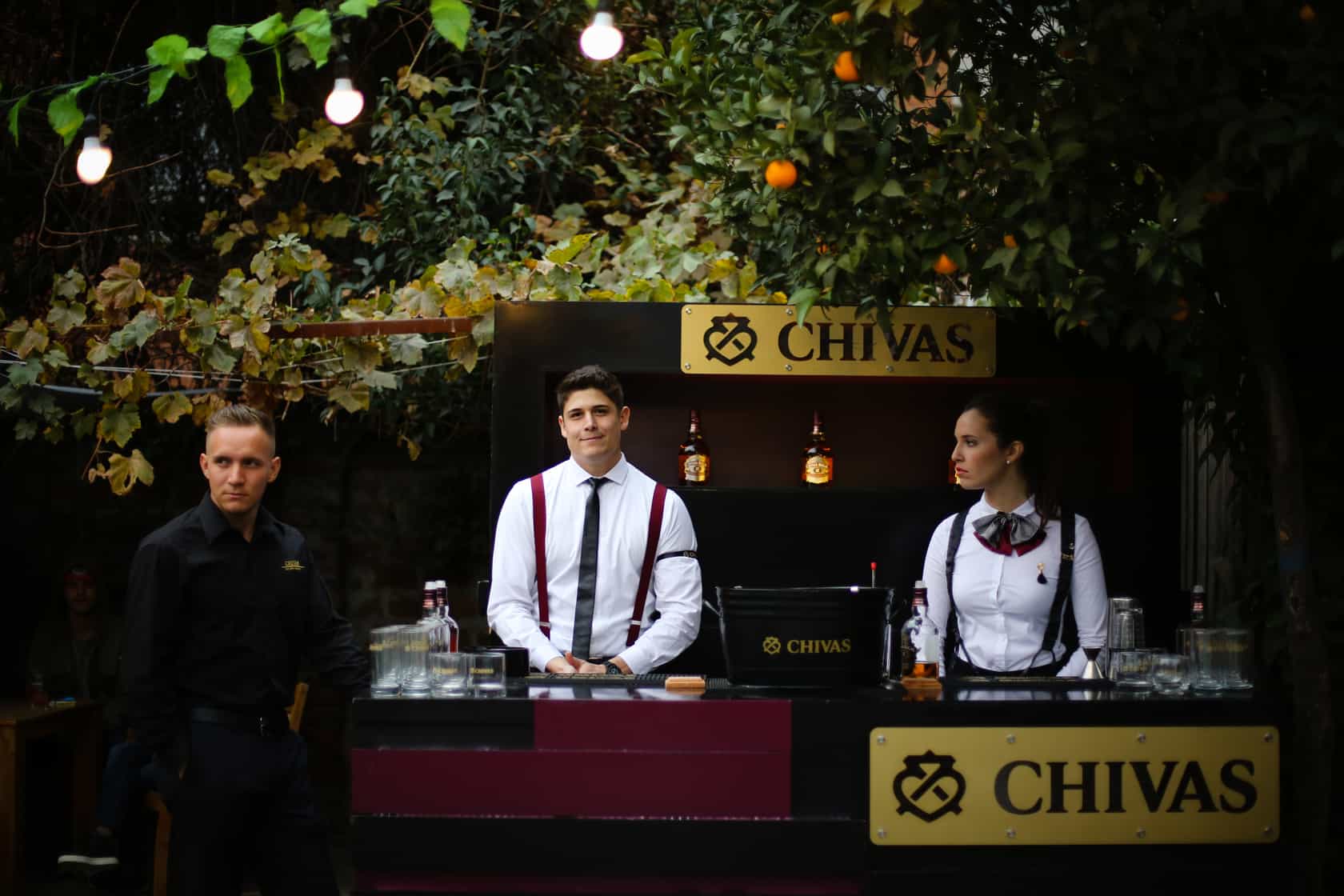
Art in Santiago is somewhat divided—there are the art circles of the upper class, and there are the circles of the “up-and-coming.”
“Art in Chile is really classist,” said one artist of the country’s contemporary art scene. She went on to describe a connection that she’d observed of some unexpected arrivals into the exclusive art circles. “There was this group of people who found out that if they came to gallery openings, that they got free food and booze,” she said, describing a group of young Chileans.
The artist (who wished to remain unnamed) said that this was something great—that this movement, despite its original “free grub” motivations, turned out to yield a genuine engagement in the art scene.
“So there was a girl who belonged to this ‘gallery openings = free booze’ group. But in the end, she was attending all these gallery openings…and she was asking all the best questions in the artist talks because she was seeing more art than anyone else.”
According to this artist, these interactions surpassed even the those that she’d had with other artists in the Santiago scene. “An artist has never approached me to talk about my art,” she said. “But this girl did.”
Galería Weekend was noteworthy, therefore, because it made an effort to include the general public in the art spheres; something which is, according to many, unprecedented.
Art, Spirituality and the Environment: a conversation with artist Isabel Klotz. Exposition: "Ma"
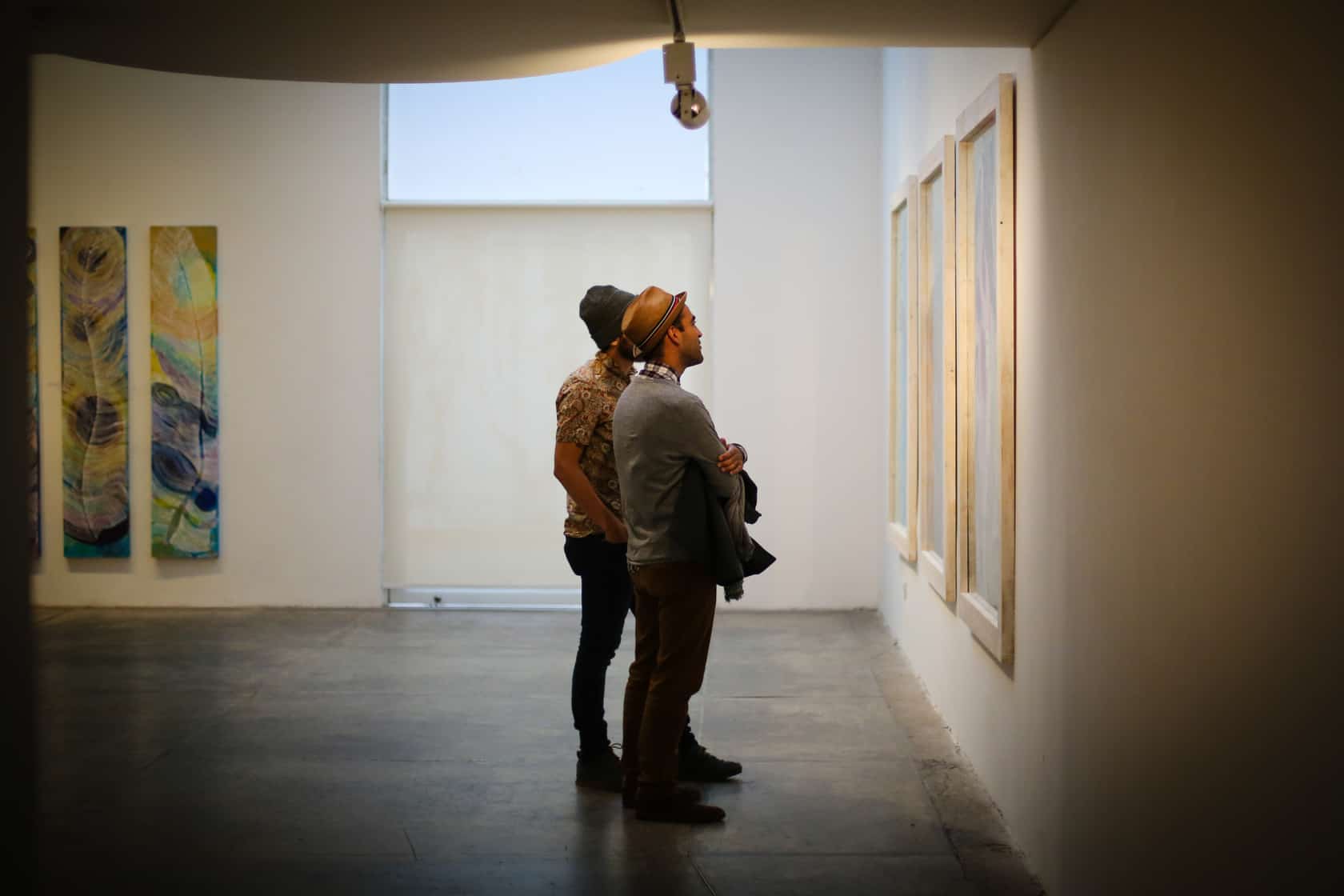
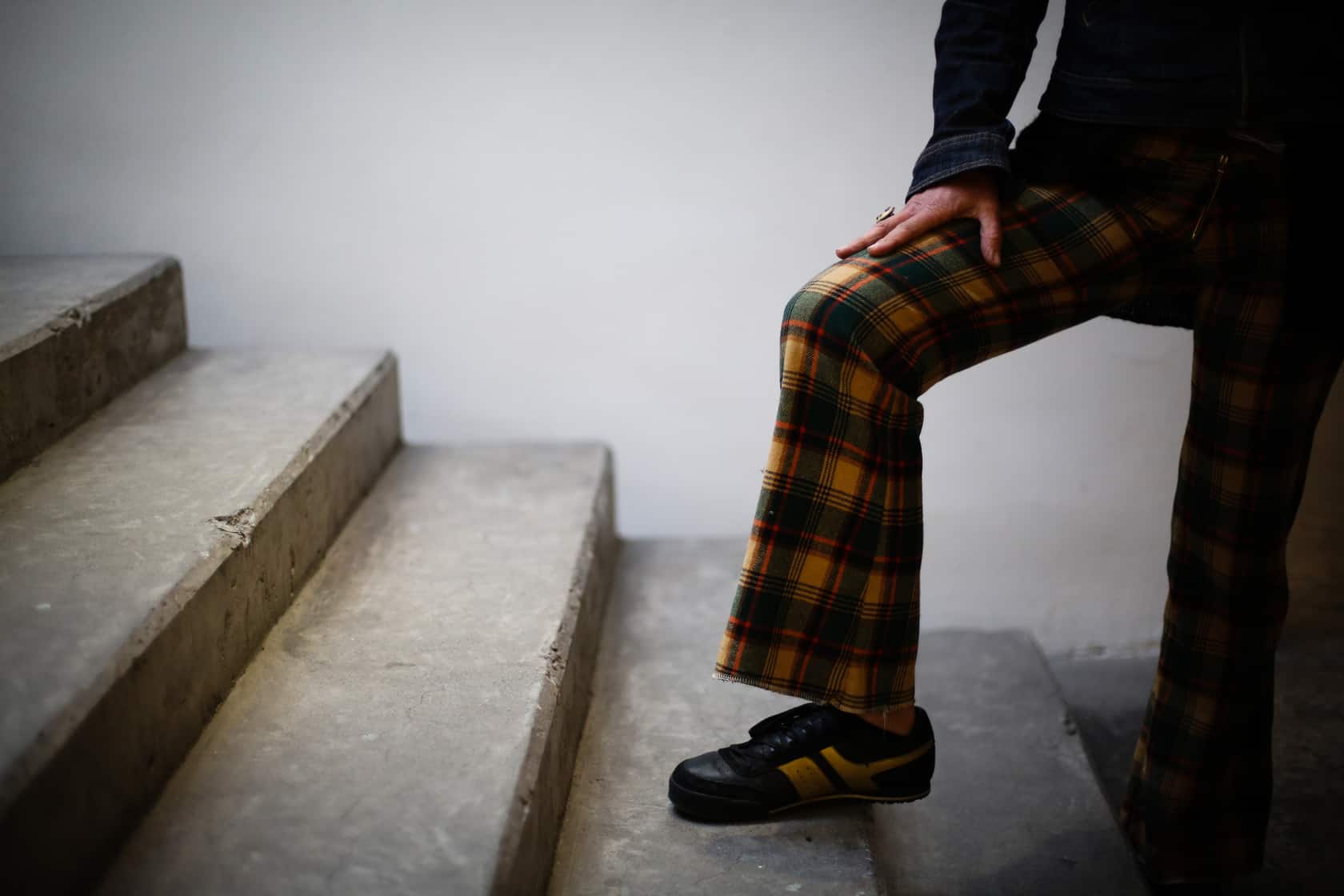
I will conclude, here, with a transcript of my interview with artist Isabel Klotz.
Klotz, through an exhibition of recent work, took part in Galería Weekend Santiago. Her body of work—a combination of painting ceramic pieces—focuses on the spiritual connection between human and ocean.
FitWild: Isabel, thank you for sharing your space with us. I’d like to find out a bit more about the energy and inspiration behind your pieces; my first question is: where in your work do you identify spirituality?
Klotz: In my work I kind of combine science and spirituality. And I do think that spirituality and science, they are basically the same thing…because science is very intuitive and eventually you find a point (the metaphysical) where soul and science, they match.
FitWild: Where do you find your inspiration as an artist?
Klotz: Since I remember, I open myself totally and surround myself completely in nature. I like to observe—for years—the same situation and that’s how I draw conclusions.
FitWild: Which specific aspects of nature do you draw from when creating?
Klotz: I’m Chilean right? If you’re Chilean, you are definitely connected to the sea side, connected to the ocean. Chile is a “mountain ocean.”
So walking along the beach where I’ve lived for six years, I find again and again the same things. Birds. Feathers. Little holes of these little creatures, crabs. Stars in the night. Right? So wind, water…here [in this exhibition] it’s the observation of the feather.
And if you observe the feathers, you start to observe the wind. Then if our think about wind, you think about the planet. And if you start to think about the rotation of the planet, you think about the solar system. Then galaxy, then the cosmos, then the universe.
Everything rotates, everything is in motion. All the planets—all the shapes—are round. All of that is my research and my connection with the totality.
FitWild: What inspired the name of this exhibition?
Klotz: I call this show “Ma.” Ma is the primordial mantra before ohm. It’s the connection with totality. I’m a Kundalini yoga instructor. Because of that I also think a lot about vibration.
The rest of the exhibition is language, feelings, inspiration. The feelings from this show are very peaceful.
FitWild: Do you find a connection between sport and your artwork?
Klotz: I’m a surfer, and surf is meditative sport. Meditation is having your mind in the present.
If you surf, you have to be very aware of the present because the ocean is in constant motion. Meditation is not sitting like a Buddha, silent and not moving. It’s being connected.
You have to be connected in a meditative state. It’s simple.
